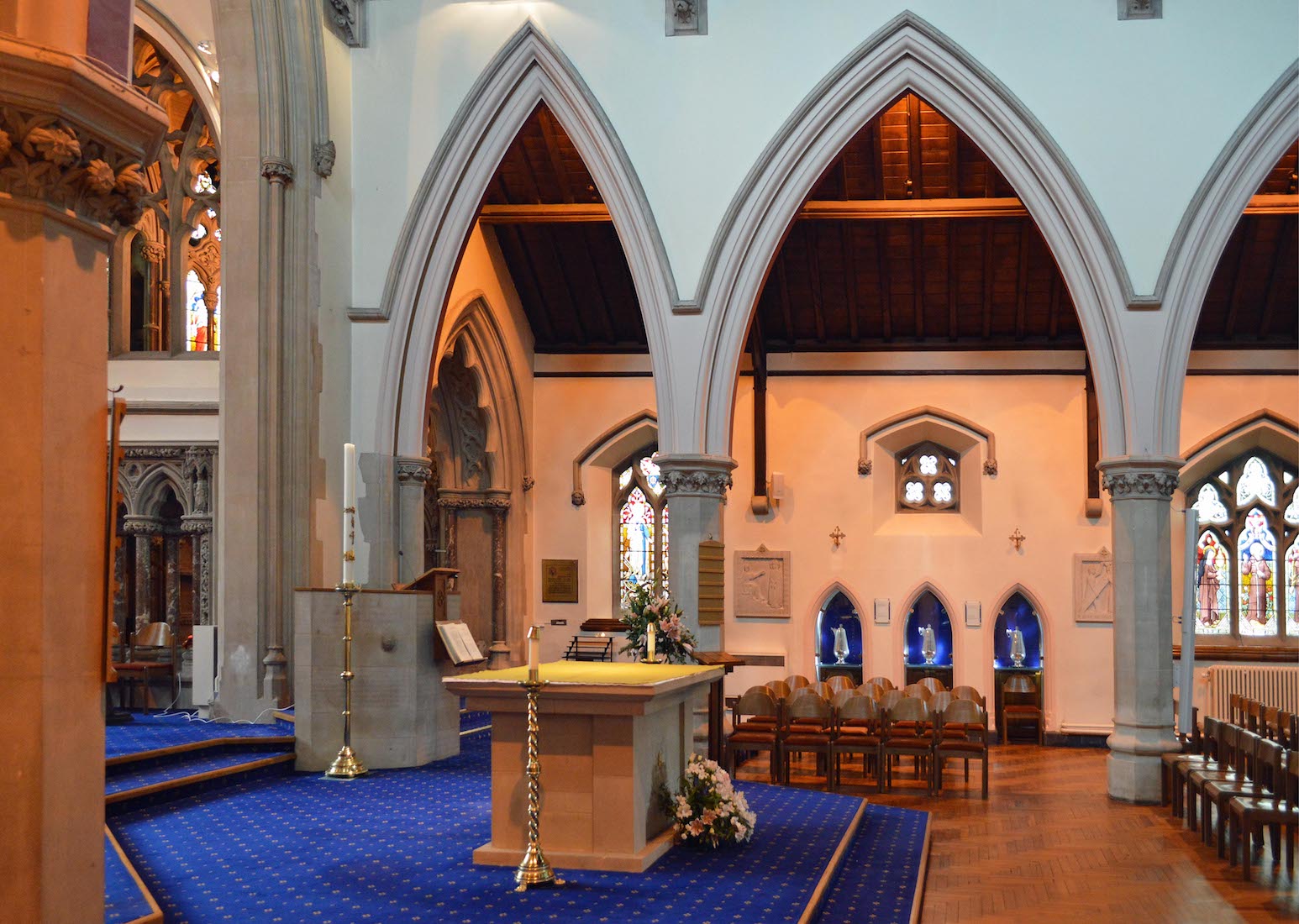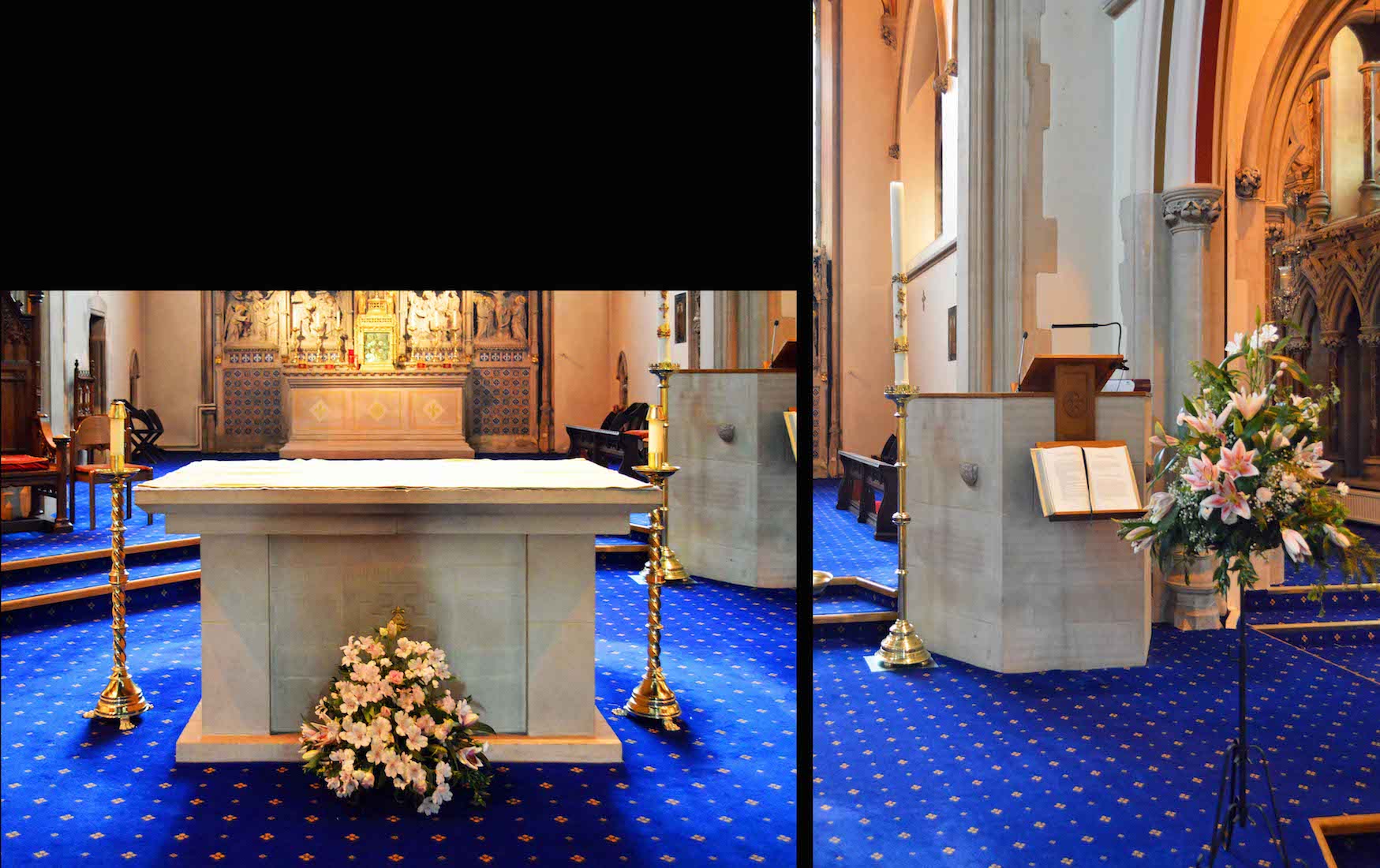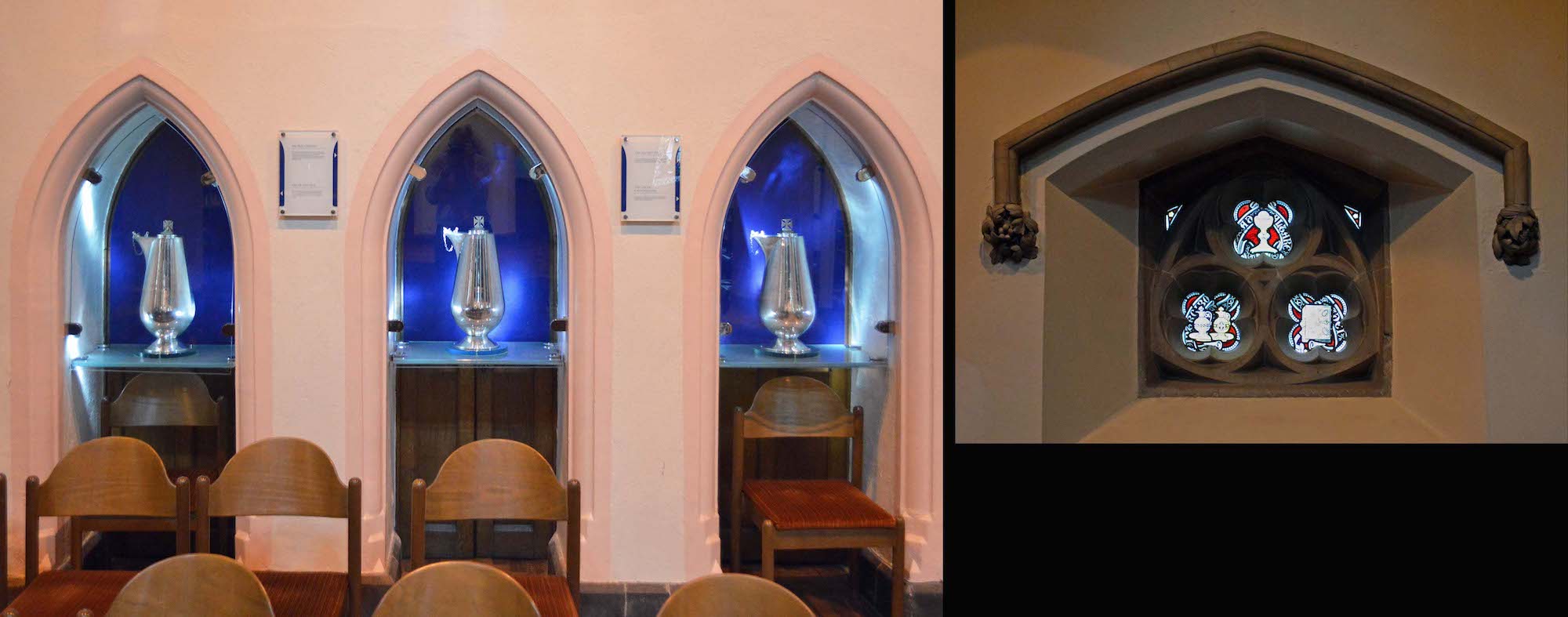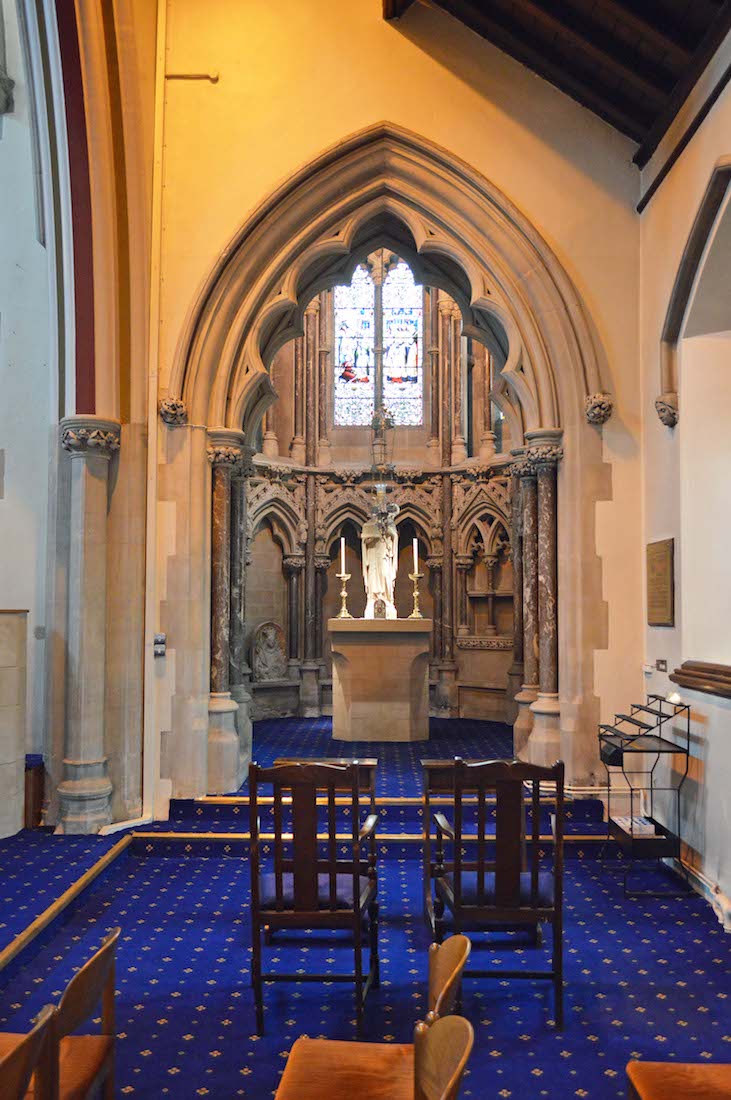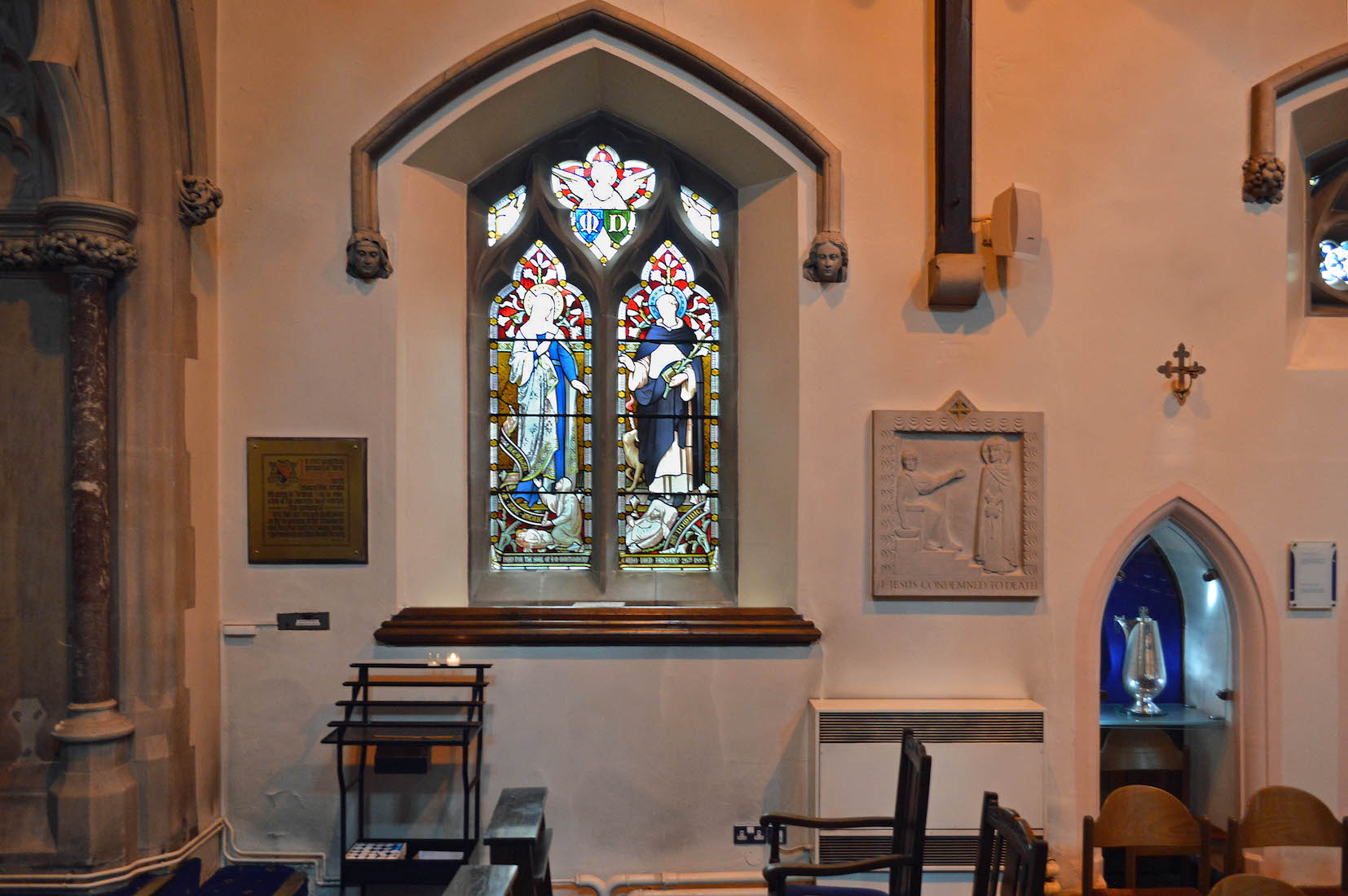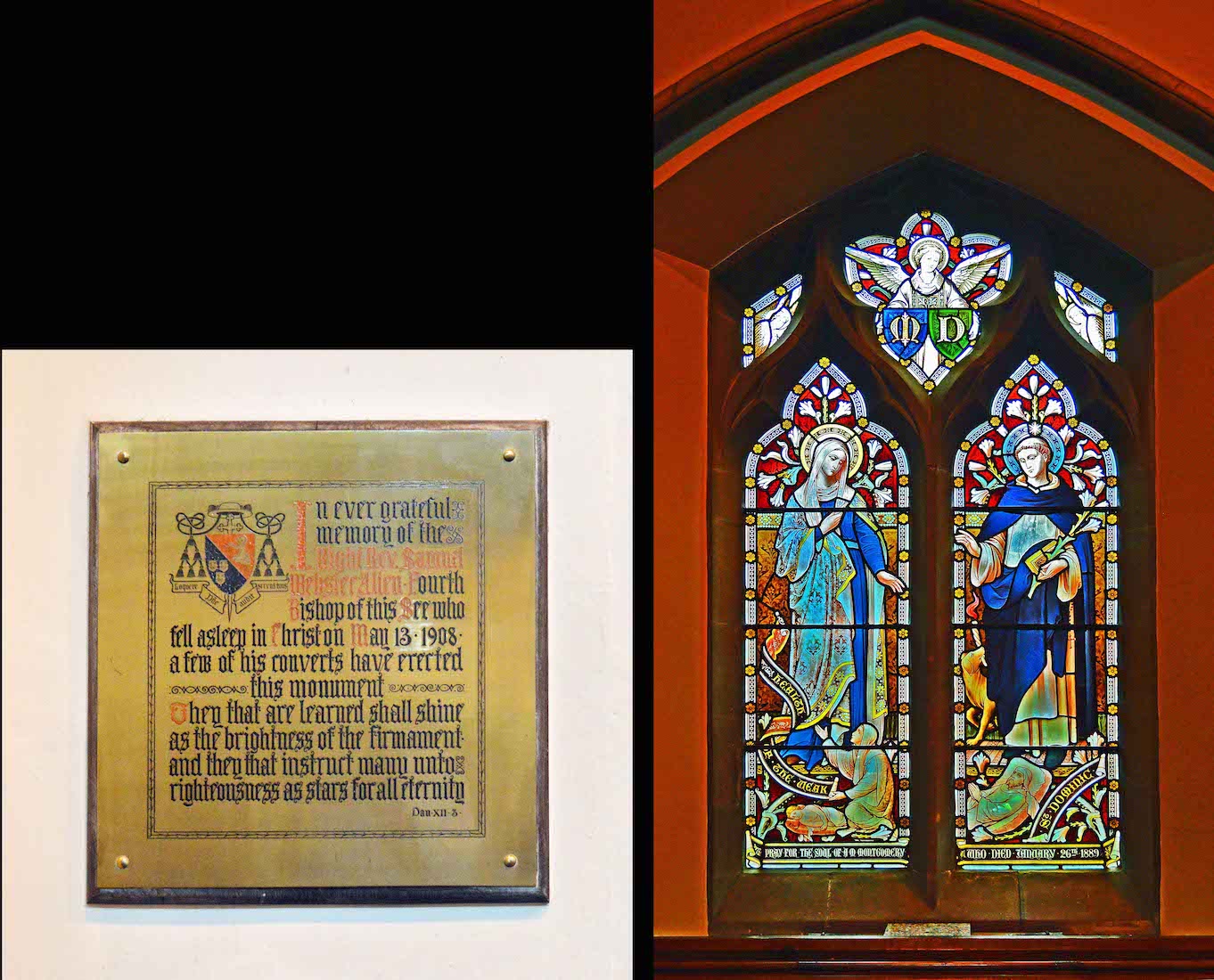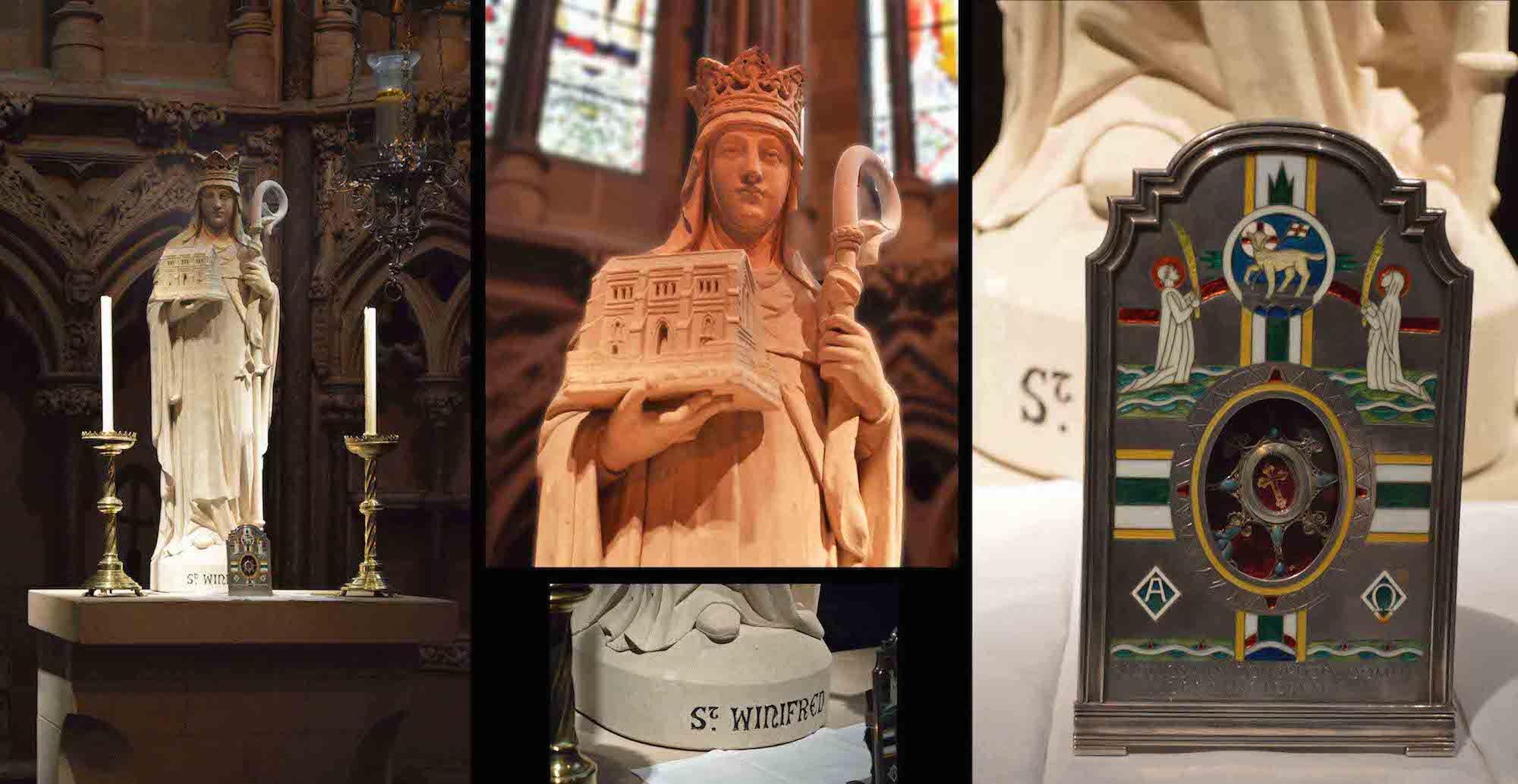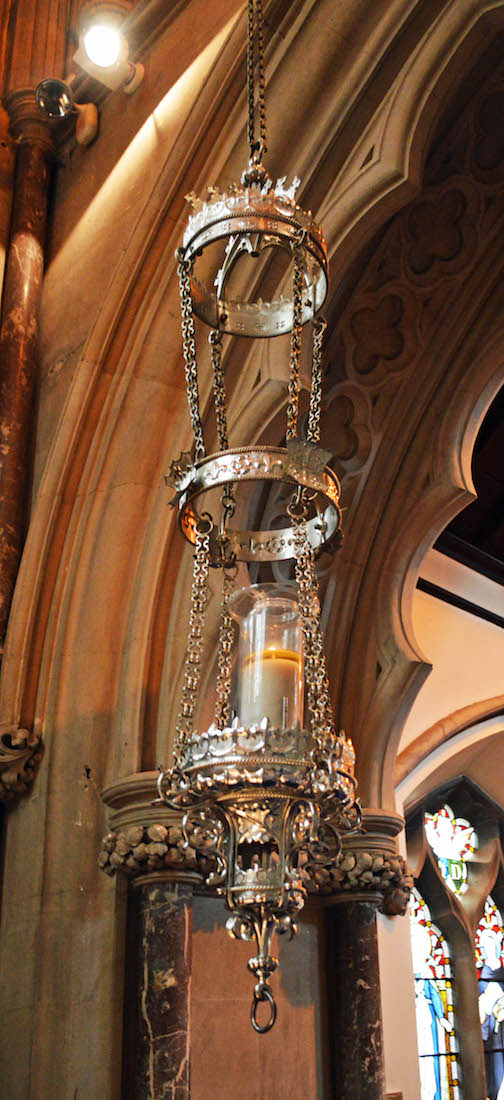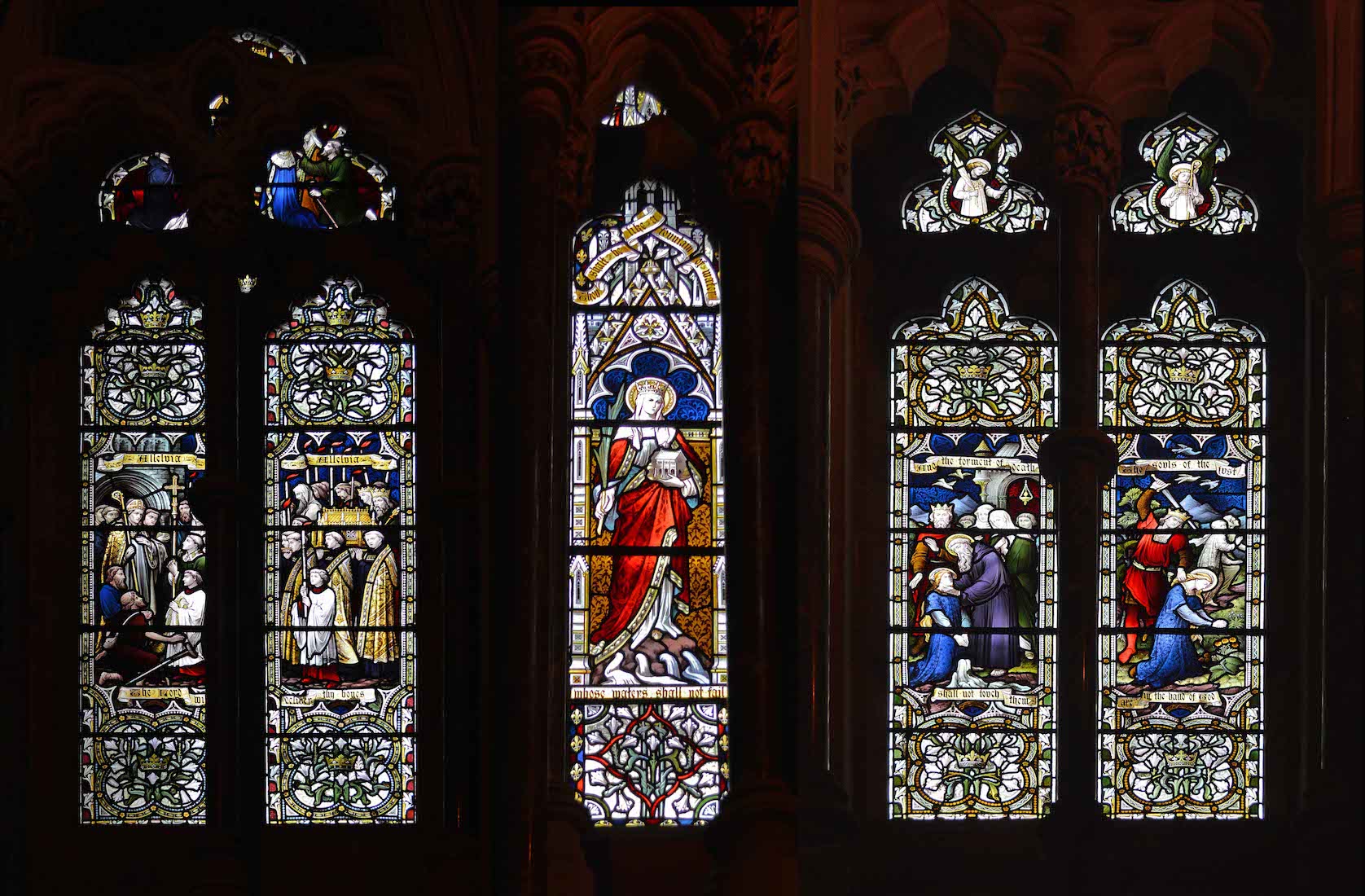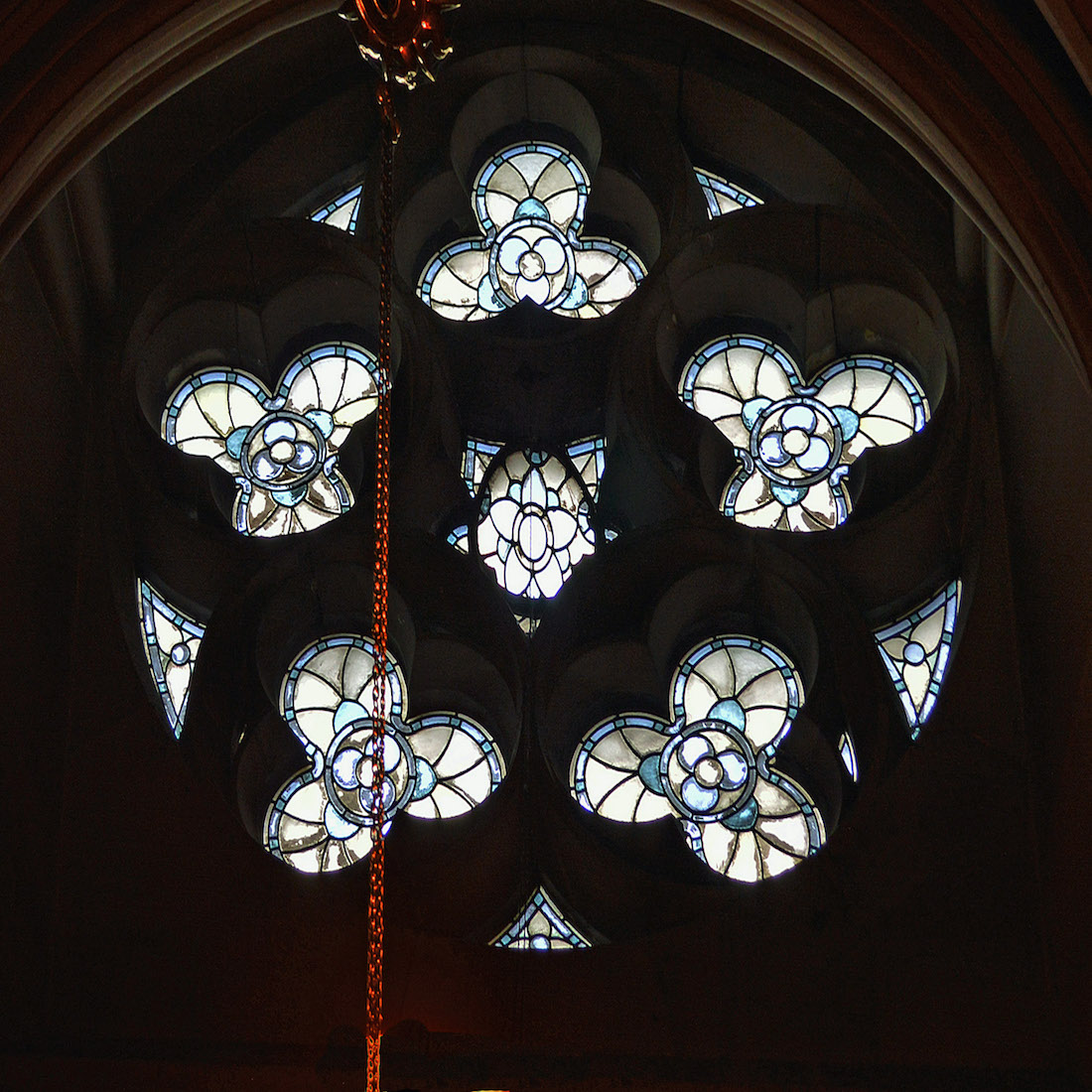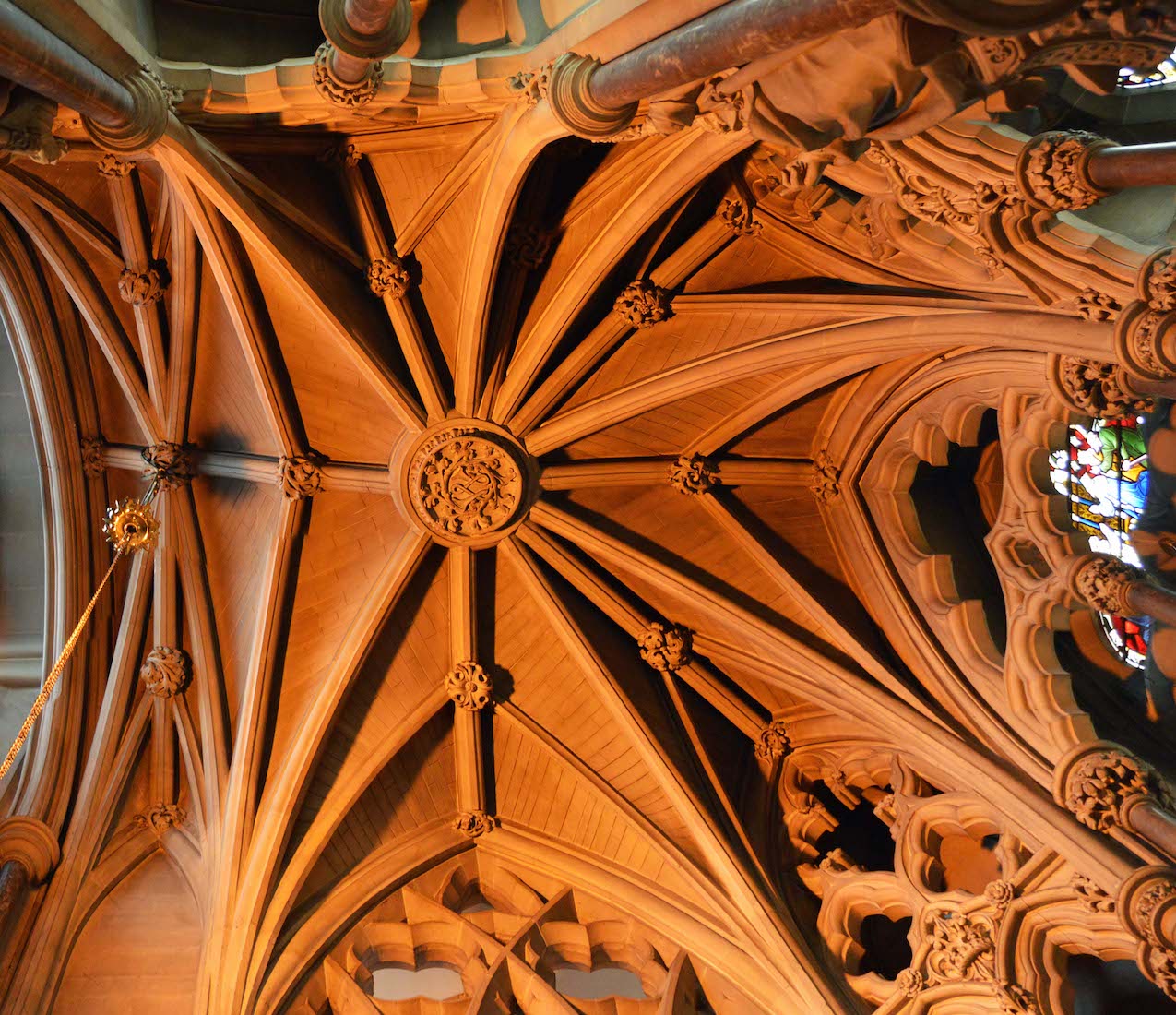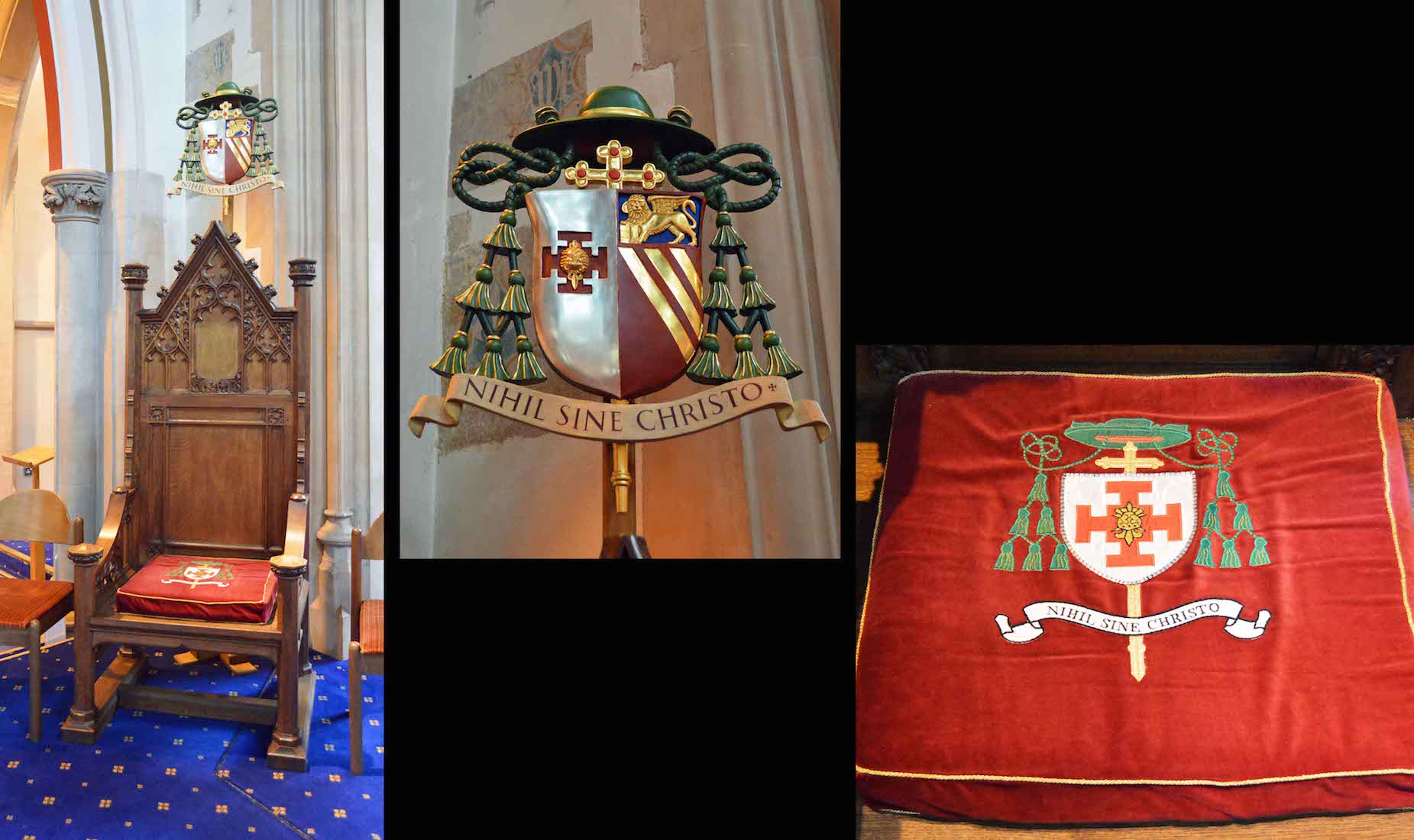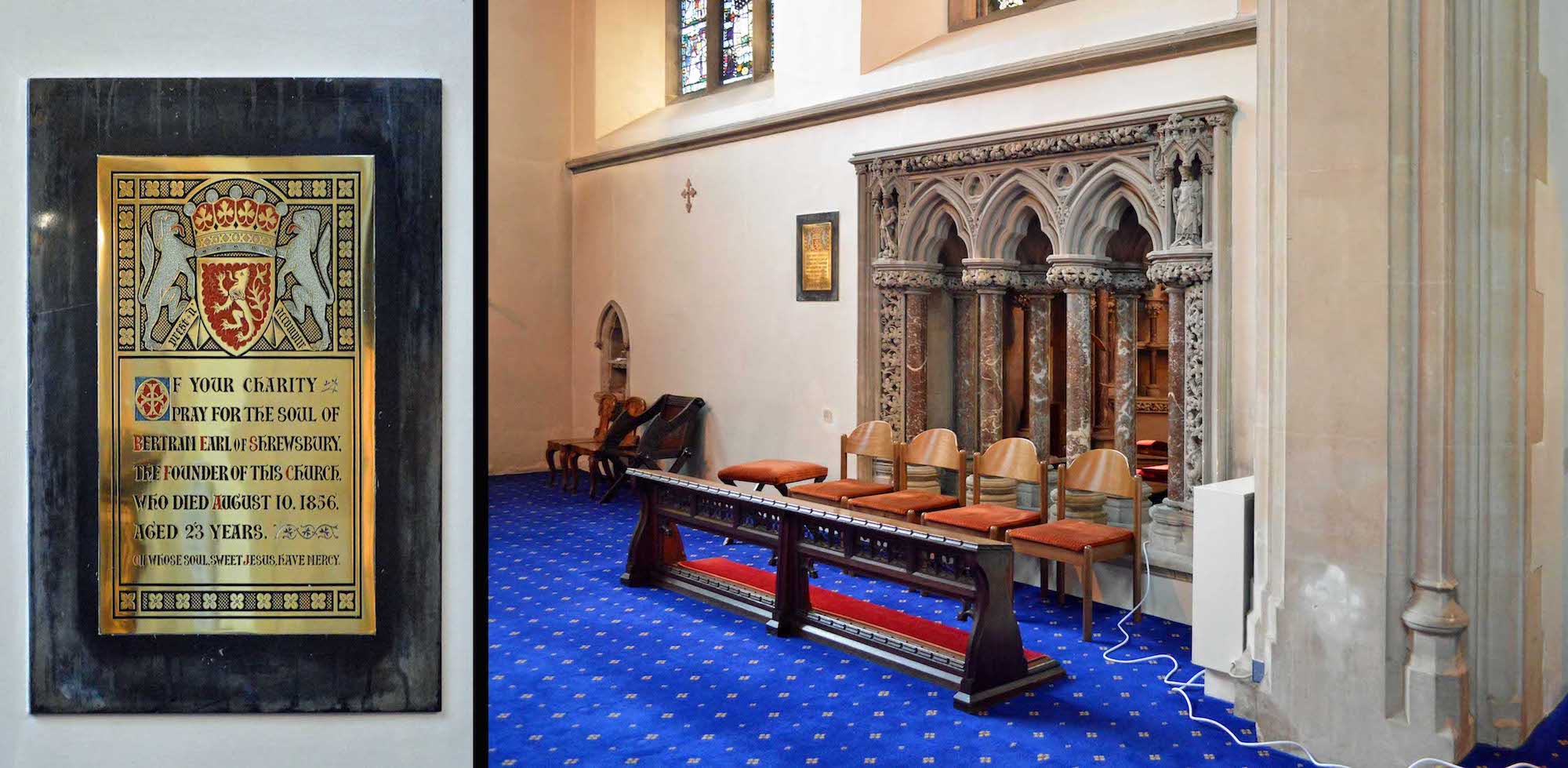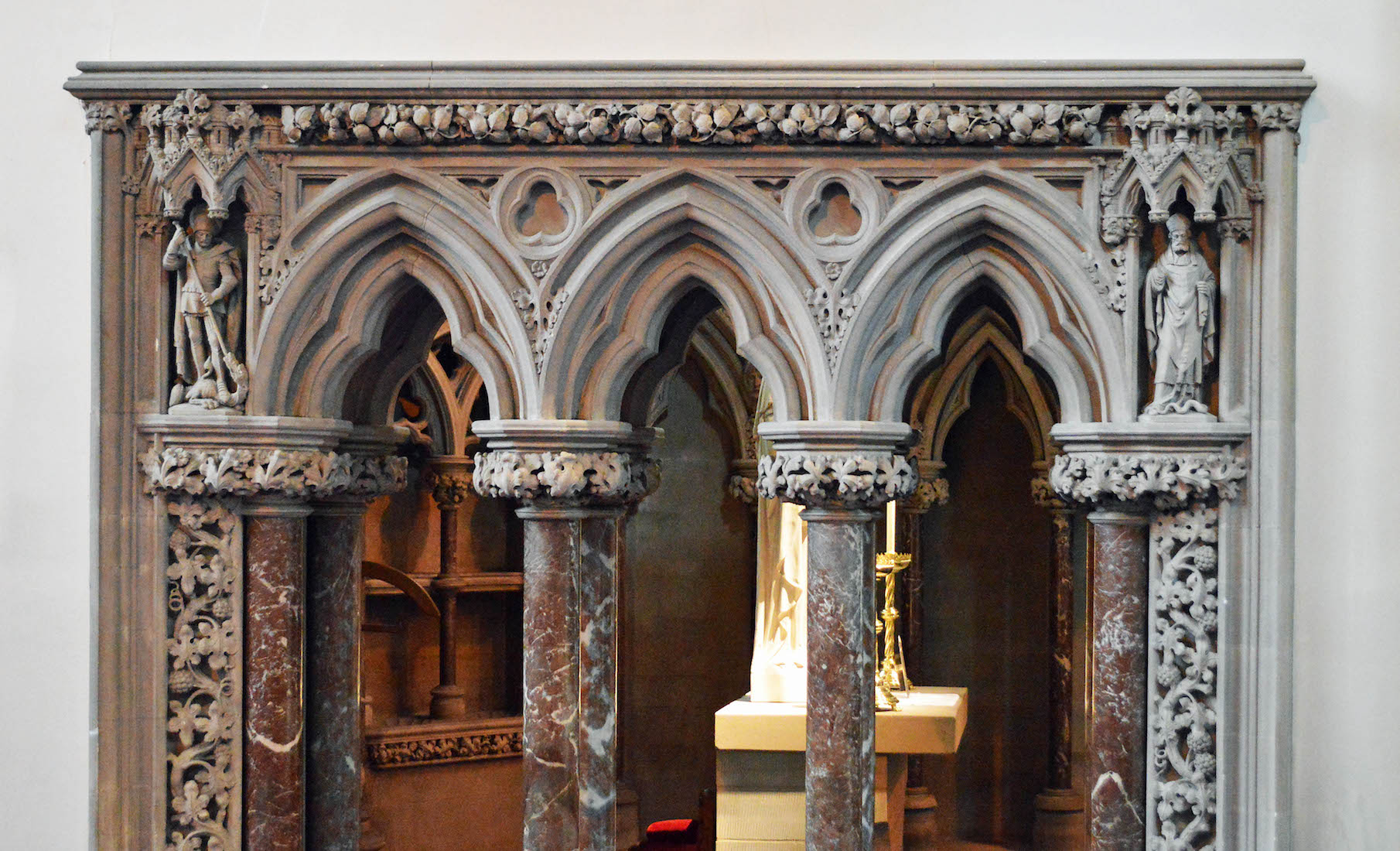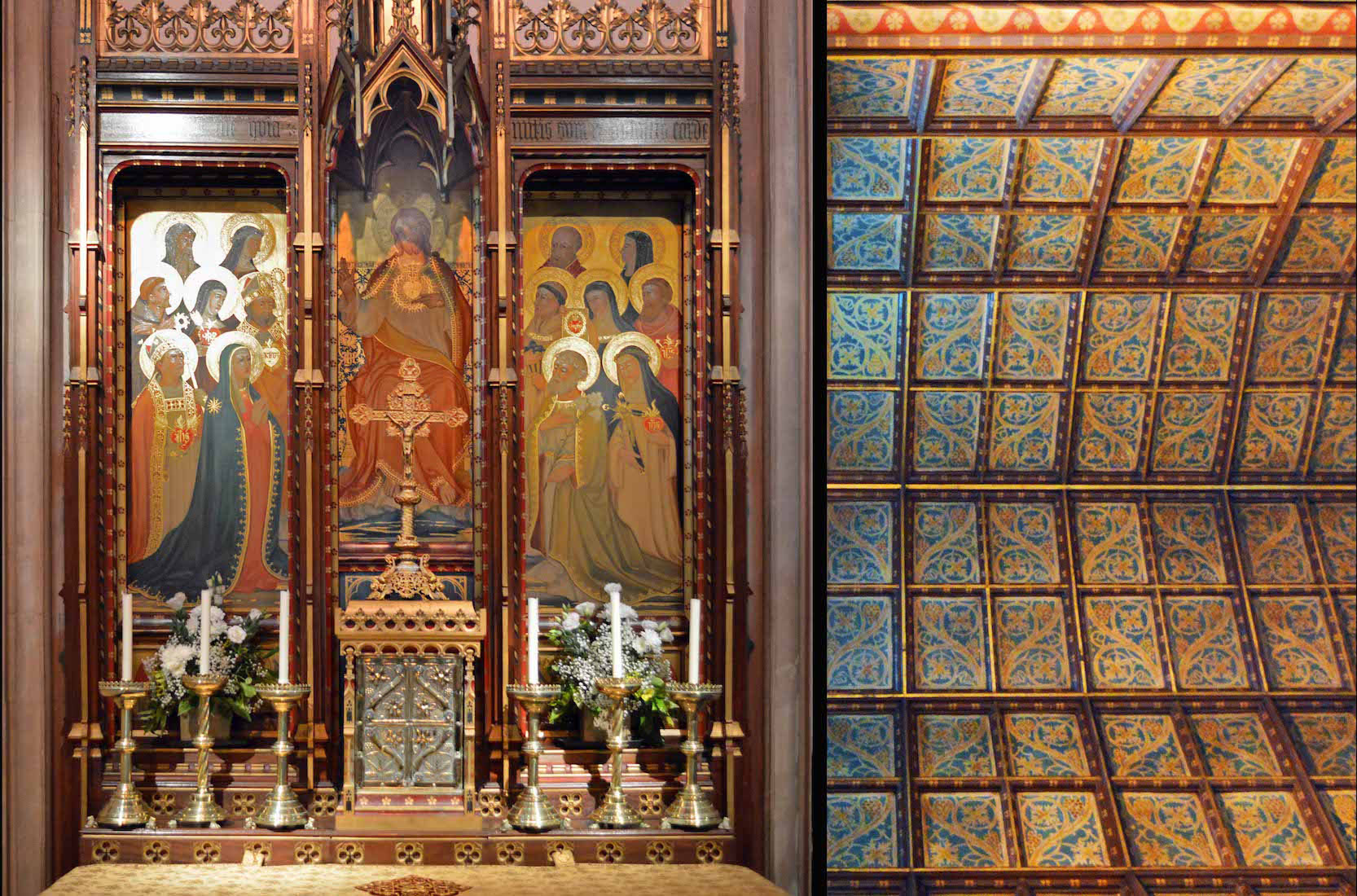
A closer view of the reredos, with the crucifix standing on top of the tabernacle in which the reserved elements of the Eucharist are stored. The chapel also has a ceiling of specially decorated panels. INDEX
42. ORGAN

A second organ console stands near the front of the nave, perhaps for use with the choir or small congregations.
43. PAST THE NAVE ALTAR
Looking across the nave, past the nave altar we see three small arches framing alcoves, corresponding to the arches in the North nave wall. Behind the nave altar is an ambo and a Paschal candle.
44. ALTAR, AMBO, CANDLE
The nave altar is a simple solid structure, seen here with the high altar behind. The nave altar is made of local Grinshill stone and dates from 1985. These days the Mass is administered from this altar with the priest facing the congregation. At right is the ambo from where the Scripture is read and the Gospel proclaimed. Next to it is the Paschal candle with the message that Christ is the Light of the world.
45. HOLY OILS, WINDOW
The three blue alcoves on the South side contain the holy oils. There are three kinds: oil of catechumens, holy chrism, and oil of the sick. The first and third are pure olive oil. Chrism has in the oil a mixture of balm or balsam. The holy oils are symbols of spiritual nourishment and the light of grace. They are used in the public administration of baptism, confirmation, and anointing of the sick. Above the alcoves is a window depicting the Eucharistic wafer and wine, and a Bible.
47. NAVE SOUTH WALL EAST
Before we enter the chapel, we stop to inspect a brass plate and a window in the wall to our right.
48. SOUTH WALL PLATE AND WINDOW
The brass plate remembers the Right Reverend Samuel Webster Allen, who was the fourth Bishop of the See, and who died in 1908. The window shows Our Lady, Help of Christians, and St Dominic. The story is told that before Dominic’s birth his barren mother made a pilgrimage to the Abbey at Silos, and dreamt that a dog leapt from her womb carrying a flaming torch in its mouth, and ‘seemed to set the earth on fire.’ This story is likely to have emerged when his order became known, after his name, as the Dominican order, Dominicanus in Latin and a play on words interpreted as Domini canis: ‘Dog of the Lord’. The dog appears in the window.
49. ST WINEFRIDE
A statue of St Winefride holding a church and a staff stands on the chapel altar. There seem to be many variations on her name! The imitation relic(?) in front of the statue has the words (in Latin): ‘Precious in the sight of the Lord is the death of the saints.’ Saint Winefride was a Welsh virgin martyr of the 7th century. Her cult was celebrated as early as the 8th century, but became popular in England in the 12th, when her biography was first written down. A healing·spring at the traditional site of her decapitation and restoration is now a shrine and pilgrimage site called St Winefride’s Well in Holywell, Flintshire, Wales and known as ‘the Lourdes of Wales’.
50. ST WINEFRIDE CHAPEL FIGURES
A couple of saints look down on the Winefride Chapel from on high.
51. CHAPEL LAMP
The Winefride Chapel also has a decorated sanctuary lamp burning. This usually signifies the close presence of Reserved Elements of the Eucharist, but I did not see an aumbry or such in the chapel.
52. CHAPEL WINDOWS
The windows depict the story of St Winefride and the bringing of her relics to Shrewsbury. The chapel was designed in 1890 by Edmund Kirby, a pupil of Edward Pugin, and is a beautiful example of his work.
53. CHAPEL SURROUND
The walls of the St Winefride Chapel are lined with decorated Gothic arches with intricately carved stone work. The three arches shown at left look through to the adjacent sanctuary.
54. CHAPEL ROSE WINDOW
Up high at the back of the Winefride Chapel is a clear rose window which is easily missed. Five trefoils are placed around a central circular window. A similar window is found at the rear of the Sacred Heart Chapel.
55. CHAPEL VAULTING
The ceiling of the chapel comprises some quite intricate vaulting. Because of the very small size of the chapel it is easy to miss these details. We now leave this chapel and move to the nearby sanctuary.
56. SANCTUARY
Standing by the nave altar we get a good view of the sanctuary. The ambo and Paschal candle stand at right: we have already noted their presence. At left in the foreground is the cathedra. In front of us is the high altar with the Great East Window, and a smaller window on either side. There is a detailed reredos behind the high altar.
57. CATHEDRA
The bishop (Mark Davies) who oversees the Shrewsbury diocese has a special association with this church, signified by this special chair or ‘cathedra’ in Latin. It is from here that this church gains the name ‘cathedral’. The coat of arms bears the current bishop’s motto ‘Nhil sine Christo’ (Nothing without Christ). The cross with inverted leopard’s head is the emblem for the Shrewsbury Diocese.
58. SEDILIA
On the South side of the sanctuary are a set of three arches with seats in front. Normally we might expect the seats to be within enclosed alcoves, but these arches frame a space directly through to St Winefride’s Chapel.
59. ARCHES
These arches are nicely carved with a figure at each top outside corner.
60. ARCH FIGURES
The figure slaying the dragon at left is clearly St George, identified by the cross he wears on his chest. The figure at right is St Patrick, seen here dispatching a snake. The fact that there are no snakes in Ireland is often credited to St Patrick who is said to have driven them all into the sea in the fifth century.


